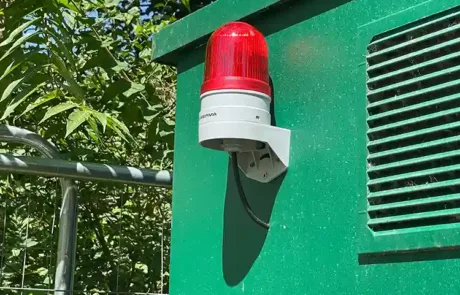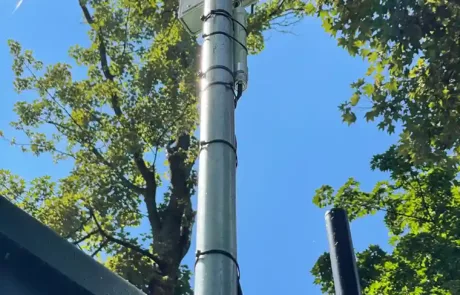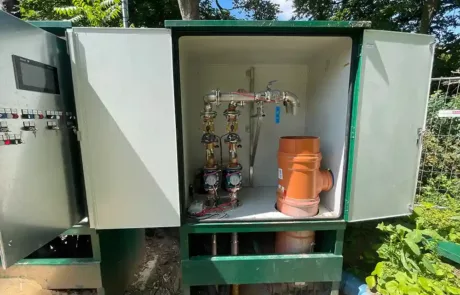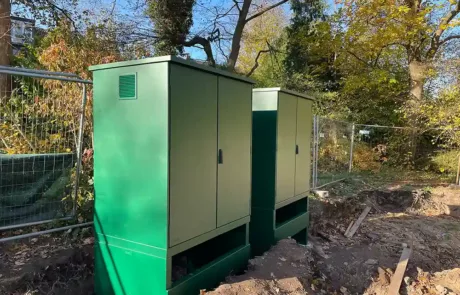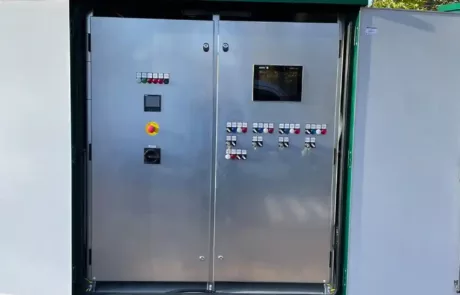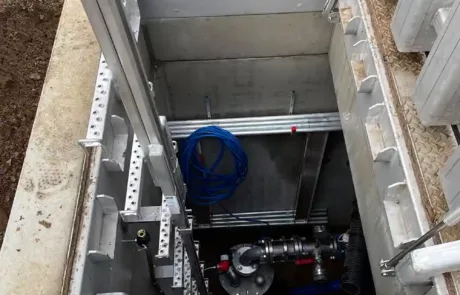WATER SUPPLY FOR A BOTANICAL GARDEN
Ensuring the water supply with frequency-controlled pumps
WATER SUPPLY FOR A BOTANICAL GARDEN
Ensuring the water supply with frequency-controlled pumps
PICTURE GALLERY
PROJECT DESCRIPTION
The groundwater is pumped into a reservoir, from which three pumps maintain the water pressure in a ring main. This runs through the botanical garden and has various pick-up points. The fill level of this reservoir is monitored using ultrasonic sensors. If the water level falls below a certain limit, drinking water is fed into the reservoir to ensure an uninterrupted water supply.
The four pumps are each controlled by a powerful frequency converter. These are located in a robust external control cabinet, which also houses the PLC that controls the system. Next to it is another external control cabinet in which the drinking water is transferred.
Both the flow rate of the groundwater and the drinking water and the water pressure of the ring main, which serves as the target value, are measured by appropriate sensors.
There is a control cabinet in the botanical garden’s operations building that can be used to control the system. Communication to the outdoor control cabinets is realized via a radio link.
PROJECT DESCRIPTION
The groundwater is pumped into a reservoir, from which three pumps maintain the water pressure in a ring main. This runs through the botanical garden and has various pick-up points. The fill level of this reservoir is monitored using ultrasonic sensors. If the water level falls below a certain limit, drinking water is fed into the reservoir to ensure an uninterrupted water supply.
The four pumps are each controlled by a powerful frequency converter. These are located in a robust external control cabinet, which also houses the PLC that controls the system. Next to it is another external control cabinet in which the drinking water is transferred.
Both the flow rate of the groundwater and the drinking water and the water pressure of the ring main, which serves as the target value, are measured by appropriate sensors.
There is a control cabinet in the botanical garden’s operations building that can be used to control the system. Communication to the outdoor control cabinets is realized via a radio link.
PICTURE GALLERY
DISCIPLINE & ADVANTAGES
Irrigation: The water supply of a botanical garden should be ensured with groundwater.
Autonomous securing of the water supply for the botanical garden
Energy-efficient use of pumps through frequency control
DATA & FACTS
Autonomous securing of the water supply for the botanical garden
Energy-efficient use of pumps through frequency control
PERFORMANCE
Project planning Control cabinet construction Programming Installation & service
Project planning and design of the control cabinets
Switch cabinets built and installation on site
Establishing equipotential bonding
Making the cable connections to the well shaft and reservoir
Antennas for radio relay link installed between outdoor switchgear cabinets and company building
Programming the PLC
Standard-compliant testing and documentation
Commissioning on site
PERFORMANCE
Project planning Control cabinet construction Programming Installation & service
Project planning and design of the control cabinets
Switch cabinets built and installation on site
Establishing equipotential bonding
Making the cable connections to the well shaft and reservoir
Antennas for radio relay link installed between outdoor switchgear cabinets and company building
Programming the PLC
Standard-compliant testing and documentation
Commissioning on site
DISCIPLINE & ADVANTAGES
Irrigation: The water supply of a botanical garden should be ensured with groundwater.
Autonomous securing of the water supply for the botanical garden
Energy-efficient use of pumps through frequency control
DATA & FACTS
Autonomous securing of the water supply for the botanical garden
Energy-efficient use of pumps through frequency control


